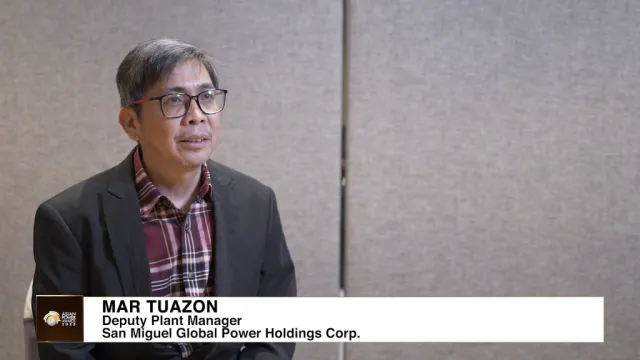
India struggles to meet 2030 climate targets: Fitch Solutions
The country plans to generate 50% of its power from renewable sources by 2030.
India would have to make policy changes to meet its 2030 climate ambitions as it has to balance its economic growth and its goal to reduce carbon emissions, according to Fitch Solutions.
India Prime Minister Narendra Modi announced at the COP 26 last month that the country targets to increase non-fossil fuel power generation capacity to 500 gigawatts (GW) and generate 50% of its power from renewable sources by 2030.
India also plans to reduce its total carbon emission by one billion tonnes and bring down the carbon intensity of its economy by 45% by 2030. It also wants to achieve net-zero emissions by 2070.
Fitch Solutions, however, noted that India must balance its strong economic growth, forecasted to average around 7% annually over the decade, with its aggressive carbon emission targets.
“India must substantially alter its current trajectory if it is to deliver on its commitments,” it said.
If India meets its emissions reduction target, its capita per greenhouse gases (GHG) emissions will be 2.31 tonnes per capita, close to 2.14 tonnes per capita in line with a 1.5 degree Celcius scenario which is below the levels expected for many developed markets, Fitch Solutions said, citing India’s Centre for Science and Environment estimates.
India currently ranks third with the highest fossil emissions in the world at 2442 metric tons of carbon dioxide emitted as of 2020, according to Global Carbon Atlas.
India Balancing Divergent Economic Growth And Emissions Reductions Targets

India – Average Real GDP Growth And Growth In CO2 Emissions*, % chg. y-o-y
*we have excluded 2020 due to distortions in the data stemming from the Covid-19 pandemic. Annual CO2 emissions for 2022-2030 are estimated based on the annual average growth rate needed to achieve India’s emissions reduction target. f = Fitch Solutions f
It is estimated that by 2030, coal, oil, and natural gas will account for 45%, 33% and 8% of the primary energy mix from 55%, 28%, and 7% in 2020. Their total share will fall to 86% from 90% with a large decline in coal, offset by the rise in oil and gas.
Fitch noted that they considered renewables growth in the power generation sector and they have likely understated its share in the overall energy mix in 2030. However, growth in renewables will happen at “such a very low base that the impact will likely be marginal.”
“As such, a step-change in policy will be needed, targeting fossil fuel displacement in the power, transport, industrial, residential and commercial sectors,” it said.
“The strongest prospects for displacing fossil fuels are in the power sector, with our Power team forecasting rapid growth in renewables over the coming decade. Nevertheless, absent a step-change in the sector, Modi’s targets are likely to be missed,” it added.
Fitch forecast nuclear, hydropower and non-hydro power renewables generation capacity to reach 314GW by 2030, with total generation share rising to around 30%, still far from India’s 2030 targets.
Supply chain bottlenecks, limited domestic manufacturing capacity and broader delays to project development will likely continue to affect the growth of renewables,” it said.
“Efforts to cut emissions from the power sector are further complicated by the country’s need to expand access to electricity and ensure access to affordable energy supplies. This, combined with the ongoing need for baseload generation to balance out intermittent renewables, will drive India’s continued reliance on coal over the decade,” it said.
“Improving fleet technology, increasing generation efficiency and the application of carbon capture technologies should yield some emissions reductions in the power sector, but India’s 2030 targets will be hard to meet in the absence of a more structural change in the energy mix,” Fitch added.
Fossil Fuels Hard To Dislodge
India – Primary Energy Mix By Fuel*, % Total

*nuclear, hydropower and renewables consumption growth proxied by power generation growth. f = Fitch Solutions forecast. Source: BP Statistical Review of World Energy 2021, Fitch Solutions
For the transport sector, the “easiest abatement options” is with the road transport segment, with India taking steps to support electric vehicles (EVs) which currently account for less than 0.05% of the total vehicle fleet.
However, EVs will still account for less than 1% of the total fleet by 2030 and emissions will only reduce if fossil fuel is not the dominant source of power generation.
Fitch added that it will be harder to reduce emissions in other sectors such as maritime and aviation which are both reliant on coal. For the aviation sector, emission reductions can anchor on efficiency improvements. Other alternatives include hydrogen and battery-power systems but the technologies are not mature yet.
There is also a need for substantial government support to scale up the production of sustainable aviation fuels, where India is poised to be a leader in production.
The Indian government has already enacted policies to mitigate emissions through the Perform Achieve Trade scheme and the India Greenhouse gases (GHG) Program. Fitch said energy efficiency will be the key driver to meet the 2030 targets.



















 Advertise
Advertise







